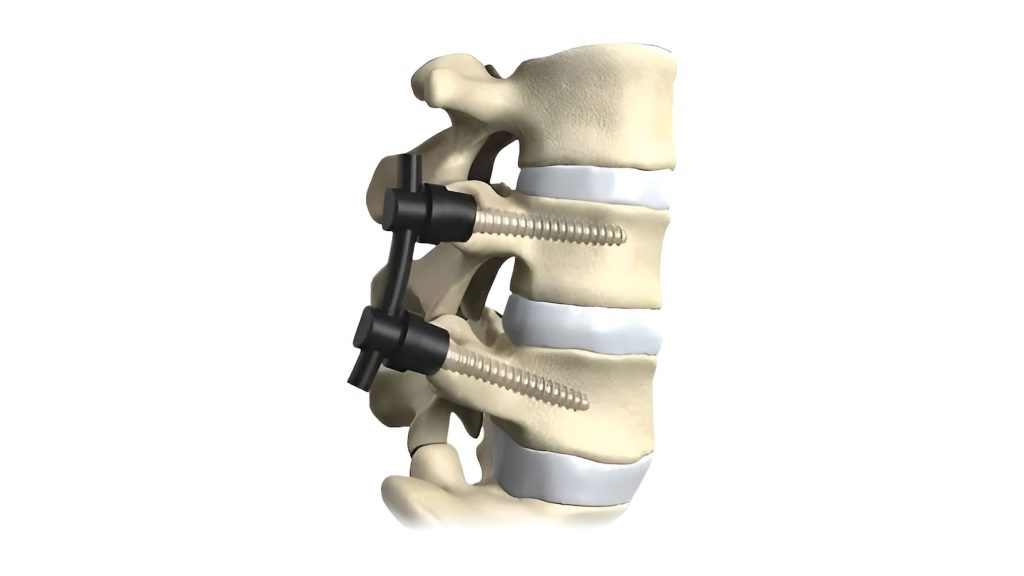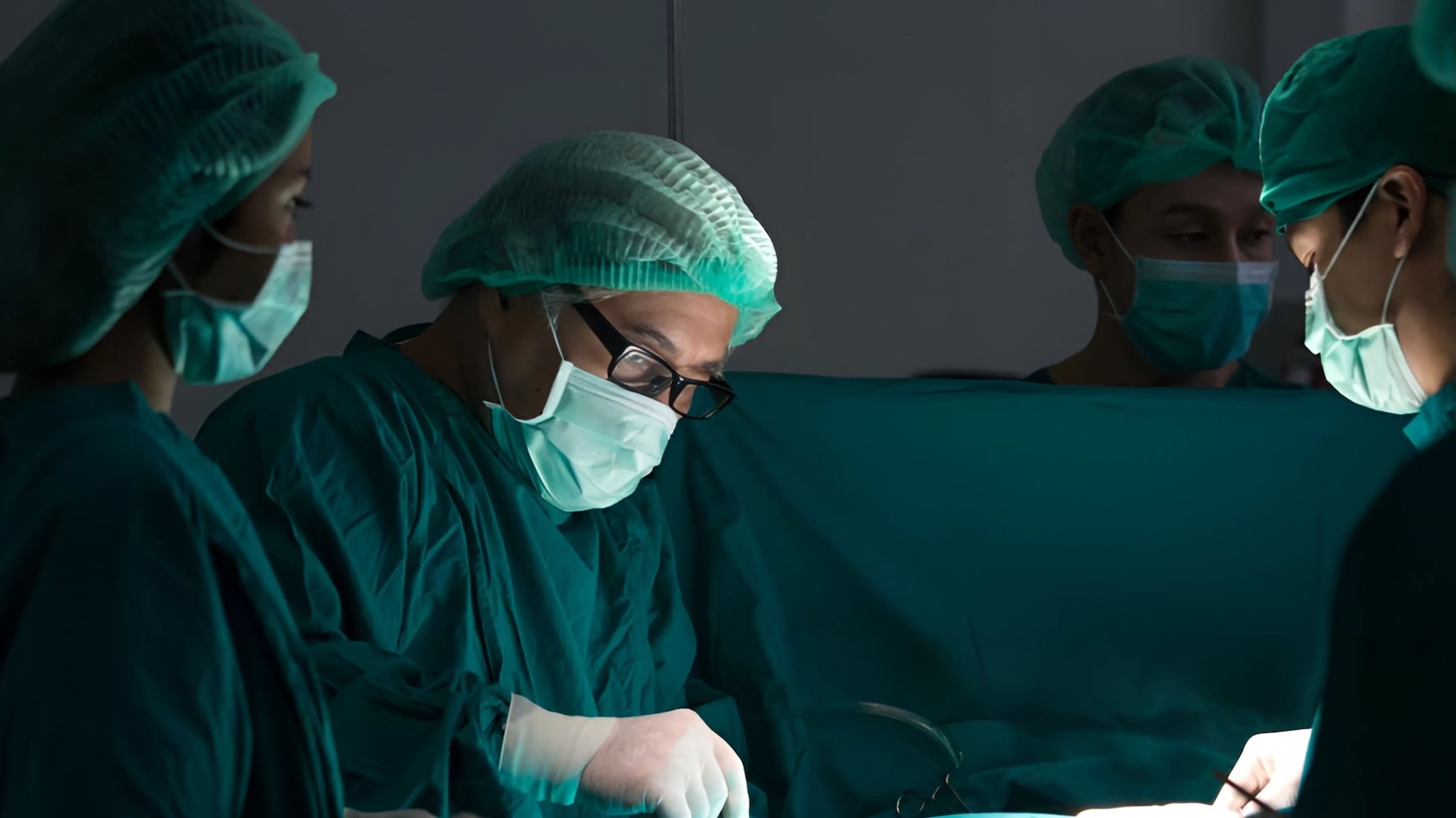Spinal Tumour Surgery: Stabilising T4 Fractures with Carbon Fibre Pedicle Screws Before Radiotherapy
Spinal tumours—whether primary or metastatic—can weaken the structural integrity of the spine, leading to pathological fractures and neurological compromise. In the thoracic spine, particularly around the T4 vertebra, these fractures require prompt stabilisation before further treatment can proceed. The use of carbon fibre pedicle screws offer biomechanical stability while being compatible with imaging and radiotherapy planning.
This is important when patients are scheduled to undergo Stereotactic Body Radiotherapy (SBRT), a targeted radiation treatment. Carbon fibre implants minimise image distortion, enabling effective radiation delivery. This article explains the role of carbon fibre pedicle screw fixation in spinal tumour management, particularly in preparation for SBRT, and why timely intervention can make a significant difference in patient outcomes.
Who Is Suitable for This Treatment Strategy
Patients with spinal tumours—either from primary bone malignancies or metastatic disease—may develop pathological fractures that compromise the stability of the spinal column. In particular, fractures involving the thoracic vertebrae, such as the T4 level, can pose a risk of spinal cord compression, neurological symptoms and pain.
Surgical stabilisation is often indicated in individuals who:
- Have radiographic evidence of spinal instability or vertebral collapse
- Are experiencing pain or neurological symptoms related to the tumour
- Are planned for Stereotactic Body Radiotherapy (SBRT) as part of cancer treatment
What Are Carbon Fibre Pedicle Screws

Carbon fibre pedicle screws are specialised spinal implants made from carbon fibre-reinforced polymer—a strong, lightweight and radiolucent material. They are increasingly used in spine oncology when radiotherapy is required post-surgery.
These screws provide mechanical stabilisation while offering several key advantages:
- Minimal imaging artefacts on CT and MRI
- Improved visualisation of tumours and surrounding tissues
- Uninterrupted radiation beam paths during SBRT
In the context of a T4 vertebral fracture, stabilising the spine with carbon fibre screws helps prevent further collapse or neurological injury while setting the stage for effective SBRT.
What to Expect Before, During and After the Procedure
Stereotactic Body Radiotherapy (SBRT) is a non-invasive, radiation treatment that delivers targeted doses to spinal tumours. However, its success depends on:
- Stable spinal alignment
- Clear imaging for planning
- Minimal radiation interference
Carbon fibre pedicle screws allow for accurate planning and administration of SBRT, particularly important in sensitive spinal levels such as T4. By minimising imaging artefacts and radiation scatter, carbon fibre implants help improve the safety and effectiveness of treatment in patients with spinal tumours.
When Is the Procedure Recommended
This surgical approach is typically indicated:
- Before SBRT, particularly when instability from a pathological fracture is present
- After imaging confirms vertebral involvement, collapse or tumour extension
- When there is a need to preserve or restore spinal stability, before radiotherapy
Early surgical intervention allows for improved pain management, prevention of neurological deterioration and optimised treatment coordination with oncology teams.
How Is the Procedure Performed

The surgical procedure stabilises the affected spinal segment while preserving imaging clarity for upcoming radiotherapy. It typically follows these key steps:
- Preoperative Planning
Detailed imaging, such as MRI or CT scans, is conducted to assess the tumour location, spinal stability and the extent of vertebral collapse or compromise. The surgical team evaluates a safe approach to access the spine while preparing for future SBRT delivery. - Surgical Access
The spine is accessed either through a traditional posterior open approach or a minimally invasive technique, depending on the location and complexity of the lesion. At the T4 level, special care is taken due to its proximity to vital structures such as the spinal cord and lungs. - Placement of Carbon Fibre Pedicle Screws
Carbon fibre pedicle screws are inserted into the vertebrae above and below the pathological fracture to anchor the segment. Carbon fibre provides the strength needed for stabilisation while allowing for clear imaging and radiotherapy planning. - Rod Fixation and Alignment
Carbon fibre rods are connected to the screws, allowing our surgeon to realign and stabilise the spine. This prevents further collapse, alleviates pressure on the spinal cord or nerves and creates a stable foundation for SBRT. - Postoperative Imaging and SBRT Planning
After surgery, imaging is performed to confirm screw placement and spinal alignment. The absence of metal artefacts allows radiation oncologists to plan SBRT, targeting the tumour while sparing surrounding healthy tissue. - Recovery and Monitoring
Patients are closely monitored during recovery, with a focus on neurological status, pain control, and wound healing. Follow-up care includes coordination with oncology teams for the timely initiation of SBRT.
Why Consult Dr. Gamaliel Tan for Spine Surgery
Dr. Gamaliel Tan is an orthopaedic spine surgeon at Ortho Spineworks, with clinical expertise in spine surgery, motion preservation and complex spine procedures. He has experience managing spinal tumours that require stabilisation and coordinated care with radiation oncologists for SBRT planning.
Patients benefit from:
- Individualised assessment of spinal stability and tumour involvement
- Access to radiolucent implant technology suited for post-surgical radiotherapy
- Integrated care from diagnosis through to surgical planning and recovery
Dr. Tan’s clinics at Mount Elizabeth Novena and Mount Elizabeth Hospitals are equipped to support multi-disciplinary care for patients with spinal tumours, ensuring timely intervention and alignment with cancer treatment pathways.
Optimising Spine Stabilisation and SBRT for Spinal Tumour Treatment
Carbon fibre pedicle screws offer an advantage in the treatment of spinal fractures caused by cancer, particularly when preparing for Stereotactic Body Radiotherapy (SBRT). By providing stability, minimising radiation interference and maintaining the alignment of the spine, this approach enhances the accuracy and safety of radiotherapy, which is crucial for effective tumour treatment.
For patients with spinal tumours or metastases at the thoracic level, early consultation with our spine surgeon, Dr. Gamaliel Tan, can help ensure optimal spinal stabilisation and effective integration with radiotherapy treatment plans. Addressing these concerns promptly can significantly impact recovery and quality of life, leading to good long-term outcomes.
